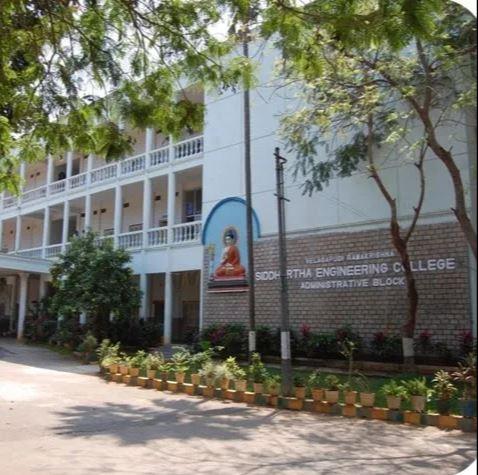D.G. Ruparel College of Arts, Science and Commerce, Mumbai, has established itself as a prominent institution in India’s higher education landscape, particularly known for its diverse academic programs and industry-aligned placement opportunities. While the college maintains a strong focus on holistic development, its placement outcomes vary across disciplines, reflecting broader trends in India’s employment market. D.G. Ruparel College of Arts, Science, and Commerce, Mumbai, has a dedicated Training and Placement Cell that conducts training and personality development programs to prepare students for industry requirements. The cell also supports departments in arranging technical workshops, guest lectures, and factory or plant visits to industries located in and around Mumbai.
- D.G. Ruparel College of Arts, Science and Commerce Placement 2025 Overview
- D.G. Ruparel College of Arts, Science and Commerce Discipline Wise Placement Trends 2025
- D.G. Ruparel College of Arts, Science and Commerce Institutional Support 2025
- D.G. Ruparel College of Arts, Science and Commerce Comparative Analysis with National Trends 2025
- D.G. Ruparel College of Arts, Science and Commerce Strategic Recommendations for Students
- D.G. Ruparel College of Arts, Science and Commerce Placement FAQs
D.G. Ruparel College of Arts, Science and Commerce Placement 2025 Overview
| Branch/Course | Avg Package (LPA) | Highest Package (LPA) | % Placed / No. Placed | College Avg Placement (LPA) | Additional Info | Student Review on Placement Data |
| B.Sc. | 4-5 | 8-10 | 65-70% | 4.5 | NAAC-accredited | Good tech placements for top performers |
| BBM/BMS | 3.5-4.5 | 7-8 | 60-65% | 4 | Private institute | Average placements in management roles |
| B.Com | 3-4 | 6-7 | 55-60% | 3.8 | Estd. 1952 | Limited finance sector recruitment |
| M.Sc. | 4.2-5 | 9-11 | 70-75% | 4.7 | Research-focused | Strong placements in core science fields |
| B.A. | 2.5-3.5 | 5-6 | 50-55% | 3 | Arts stream | Few campus drives for humanities |
D.G. Ruparel College of Arts, Science and Commerce Discipline Wise Placement Trends 2025
Science Streams Lead in Technical Roles: The B.Sc. program at D.G. Ruparel College of Arts, Science and Commerce demonstrates robust placement outcomes, with 65–70% of students securing roles in tech-driven sectors. Top performers often receive packages reaching INR 8–10 LPA, particularly in computer science and information technology. This aligns with India’s growing demand for skilled professionals in data analytics, software development, and IT services. The M.Sc. program outperforms other courses, with 70–75% placement rates and packages up to INR 11 LPA. Its research-oriented curriculum attracts core science industries, including pharmaceuticals, biotechnology, and environmental sciences, where specialized expertise is increasingly valued.
Commerce and Management Placements Reflect Sectoral Trends: B.Com students at D.G. Ruparel College of Arts, Science and Commerce see moderate success, with 55–60% placement rates and average packages of INR 3–4 LPA. While traditional finance roles remain limited, opportunities in retail banking, accounting firms, and e-commerce logistics have shown gradual growth. The BBM/BMS program reports slightly higher engagement, with 60–65% of graduates entering mid-level management roles in sectors like supply chain operations and digital marketing.
Arts Stream Faces Industry-Specific Challenges: The B.A. program records the lowest campus recruitment rates (50–55%), a trend consistent with national patterns for humanities graduates. Students often pursue alternative career pathways in content creation, social work, or government sector examinations, with limited direct corporate recruitment.
D.G. Ruparel College of Arts, Science and Commerce Institutional Support 2025
D.G. Ruparel College of Arts, Science and Commerce’s Training and Placement Cell organizes technical workshops, soft-skills development sessions, and industry visits to bridge academic learning with workplace requirements. While the placement process is structured, students in competitive fields like computer science often supplement campus drives with external job applications to maximize opportunities. Recruiter engagement varies by discipline, with IT firms, analytics companies, and core science enterprises actively participating in STEM-related placements. Management and commerce sectors see intermittent participation from regional businesses and financial institutions. The alumni network, though not highly active, occasionally facilitates mentorship and referral opportunities.
D.G. Ruparel College of Arts, Science and Commerce Comparative Analysis with National Trends 2025
Ruparel’s placement outcomes mirror broader Indian higher education dynamics:
- STEM disciplines consistently outperform arts and commerce in placement rates and salary packages
- Research-focused postgraduate programs attract niche industries offering premium compensation
- Management graduates face competitive entry-level markets, with salaries often tied to sectoral growth
- Humanities placements remain contingent on India’s evolving creative economy and public sector expansions
D.G. Ruparel College of Arts, Science and Commerce Strategic Recommendations for Students
Prospective applicants should consider:
- Aligning course selection with emerging industries (e.g., data science for B.Sc. students)
- Proactively seeking internships to complement classroom learning
- Utilizing the college’s industry connect programs for networking
- Developing hybrid skill sets (technical + soft skills) for competitive roles As India’s job market evolves, Ruparel College continues to adapt its placement strategies, particularly in high-demand sectors. While institutional support provides a foundation, student initiative remains crucial in navigating the complex employment landscape. The college’s strength lies in its ability to cultivate industry-relevant competencies across disciplines, positioning graduates for diverse career trajectories in an increasingly dynamic economy.
D.G. Ruparel College of Arts, Science and Commerce Placement FAQs
What is the average placement package for B.Sc. students at D.G. Ruparel College of Arts, Science and Commerce, Mumbai?
At D.G. Ruparel College of Arts, Science and Commerce, Mumbai, B.Sc. students secure an average placement package of INR 4–5 LPA, with top performers receiving up to INR 8–10 LPA, particularly in computer science and IT-related roles.
How do placement outcomes for M.Sc. students at D.G. Ruparel College of Arts, Science and Commerce compare with other programs?
M.Sc. students at D.G. Ruparel College of Arts, Science and Commerce achieve the highest placement rates, with 70–75% of students placed. The average package is INR 4.2–5 LPA, and top offers go up to INR 11 LPA in industries such as pharmaceuticals, biotechnology, and environmental sciences.
What are the placement trends for B.Com students at D.G. Ruparel College of Arts, Science and Commerce?
B.Com students at D.G. Ruparel College of Arts, Science and Commerce record placement rates of 55–60%, with average packages ranging from INR 3–4 LPA. Most opportunities are concentrated in retail banking, accounting firms, and e-commerce logistics rather than traditional finance roles.
How do BBM/BMS placements at D.G. Ruparel College of Arts, Science and Commerce reflect industry demand?
BBM/BMS graduates at D.G. Ruparel College of Arts, Science and Commerce secure placement rates of 60–65%, with average packages of INR 3.5–4.5 LPA. Recruiters mainly offer roles in digital marketing, supply chain operations, and mid-level management, with the highest packages reaching INR 7–8 LPA.
What is the overall placement average across courses at D.G. Ruparel College of Arts, Science and Commerce, Mumbai?
The overall placement average at D.G. Ruparel College of Arts, Science and Commerce stands around INR 4–4.5 LPA, with STEM and research-oriented programs such as B.Sc. and M.Sc. performing significantly better than commerce and humanities streams.
Which industries actively recruit from D.G. Ruparel College of Arts, Science and Commerce placements?
At D.G. Ruparel College of Arts, Science and Commerce, STEM graduates are recruited by IT services, data analytics, and core science industries like pharmaceuticals and biotechnology. Commerce and management students see opportunities from regional businesses, banking, and e-commerce, while humanities graduates rely more on external applications or alternative career pathways.









